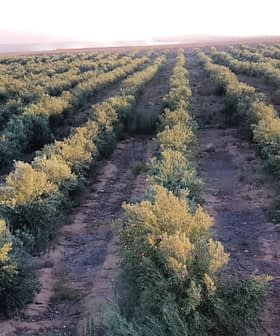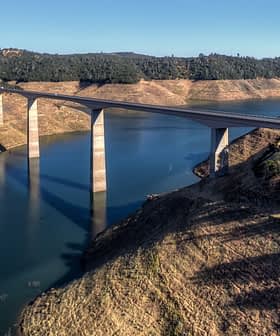Climate Change Is Transforming How Plants and Soil Interact
Changes in temperature and precipitation patterns can fundamentally transform microorganism communities in the soil. This, in turn, impacts plant growth and, potentially, crop productivity.
One of the less-discussed but more disruptive impacts of climate change on agriculture will be how changing weather and precipitation patterns affect plant-soil feedback systems, according to a recent scientific paper out of Spain.
There are thousands of microbial species in each gram of soil that strongly interact with each other and with plants. Each, however, has a favorite set of climate conditions, and changes will favor some and harm others.
The plants and soils of the Mediterranean basin, where the vast majority of the world’s olives are grown, will undoubtedly be impacted as the climate becomes increasingly hot and dry.
See Also:Climate Change News“In Mediterranean systems, as everywhere, the mutual interactions between plants and soil microbes will be affected by climate change,” Francisco Pugnaire, the lead researcher of the paper and a professor at Spain’s Experimental Station of Arid Zones, told Olive Oil Times.
These changes to the environment will fundamentally alter the way in which plants interact with the microorganisms in the soil and have the potential to negatively affect the productivity of crops.
“There are thousands of microbial species in each gram of soil that strongly interact with each other and with plants,” Pugnaire said. “Each, however, has a favorite set of climate conditions, and changes will favor some and harm others.”
“As a consequence, interactions will change, although we do not know enough to anticipate the direction of changes,” he added.
Changes in the local climate can alter the nutrient and mineral contents of the organic litter that falls from trees and shrubs. This, in turn, favors different types of soil microorganisms and may lead to changes in the types of microbes and fungi best suited for the environment.
Changes in the amount of precipitation that falls in specific areas can also alter the rate and amount of nutrients that decompose into the soil, which can also impact the makeup of its microorganism communities.
With a changing fungal and microbial community in the soil, comes the opportunity for previously non-native and invasive species to settle in.
In general, Pugnaire believes the boundaries of traditional vegetation zones will begin to migrate north as well as toward higher altitudes.
“Climate change, however, will force trees and plants to seek more favorable conditions in the north and mountain areas, and the same will happen with soil organisms, but some will not do so at the same time,” he said. “They will separate and that will alter the balance between species.”
This shifting of vegetative zones may impact the productivity of traditional and organic olive groves, where the changing climate will impact the soil’s microorganisms but the vegetative cover will largely remain the same.
Intensive olive farms, however, are likely to be unaffected since these rely on the use of fertilizer and irrigation to produce a uniform yield each year.
“For olive trees, I think there is ample consensus that orchards would do better higher up in elevation or in latitude,” he said. “However, where I am based [in Andalusia], the drier and warmer point in Europe, there is low land olive oil production ranked among the best in the world.”
Pugnaire added that the methods used in super-intensive agriculture are exacerbating the problems already being faced by plant-soil feedback systems in the wake of climate change.
“Intensive agriculture leads to soils low in organic matter and impoverished in microbial species, with threats of soil loss and desertification,” he said. “In this regard, the new hyper-intensive techniques are worrisome.”
However, there are practices that can be embraced by olive farmers and other types of agriculturalists to improve soil health and mitigate the impact of climate change on the plant-soil feedback systems.
“In other crops, we have seen that adding organic matter increases soil microbial diversity and increases productivity,” Pugnaire said. “Therefore moving to more sustainable practices like non-tillage and associated livestock farming will be very positive for the quality of olive oil while helping to mitigate the effects of climate change.”
“By increasing the numbers and diversity of soil microbial communities, environmentally-friendly farming could greatly contribute to buffer the negative effects of climate change on plant-soil interactions, keeping more sustainable farming,” he added
Pugnaire and his colleagues had originally prepared the scientific paper, which was a review of numerous pre-existing studies on the impacts of climate change on plant-soil feedback systems, for a United Nations conference on climate change that took place in Madrid last December.
“Our aim was to provide updated scientific evidence on the impacts of climate change and biodiversity loss and alterations for use by scientists and policymakers during and after the COP 25,” he said. “However, the outcome of the conference was disappointing, as policymakers did not reach any substantial agreement to curb CO2 emissions and we are losing precious time to halt changes that every day seem more evident, and harmful.”








